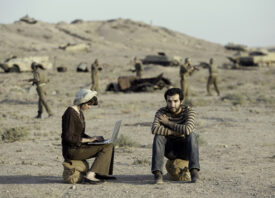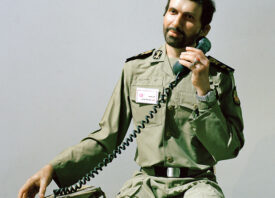Search this site
When humans are gone, this is what our homes might look like


In a house where man lives no more, nature encroaches. Before long the crevices that once were the narrow gaps between skirting boards give in to plant life. But when does a house cease to be home?
Photographer Gohar Dashti was born in the border town of Ahvaz in southwestern Iran, though now lives between Boston and Tehran. “The first steps of my childhood were during the bloody Iran-Iraq war,” explains the artist. “Growing up during the war has taught my generation to live in a constant state of fear.”
War devastation, massacres, oppression, disease and natural disasters force people to emigrate and abandon their houses. Dashti’s latest series Home is a response to her question “what happens to these people’s homes?” It is also a quiet reflection on our tendency to distinguish between the artificial and the natural, the real and the fabricated.
On growing up in a war-torn country, Dashti writes: “War and life are inseparable from each other; they exist simultaneously and in parallel. I was a little girl going to school, birthdays and weddings and other celebrations were also held. On one hand things seemed normal, but war had a constant presence in the background. It was a presence that I couldn’t totally comprehend—but it was there. When the horrific nature of war becomes normal, it takes a surreal form. Most of my work visually narrates those days.”
All of the abandoned homes depicted in Home are in Iran. The artist did not know the owners, though knew that all of them belonged to people who had left the country for political and social reasons.
They no longer resemble ‘home’ as most people envision it; where there was once tiling or linoleum, there is now earth. Photographs, furniture and heirlooms which evoked comfort and nostalgia for the house’s previous occupiers, are replaced with trees and grass. With no homely attributes, we are looking at nature contained within four walls. And with time nature will consume these walls too, which will eventually crumble and fall.
These houses have not yet really succumbed to the power of nature—these photographs are staged. The artist meticulously orchestrated each scene in the same manner she would if she were designing a theatre set. Yet the fabricated reality these pictures imagine is tangible. These post-human, melancholy images encourage us to reflect on own definitions of nature, home, refuge and belonging. They also make us to reconsider our own place in the natural world. What is home other than a physical space we create for ourselves in the natural world, or the psychological space into which we transform it?
Most of us find beauty in nature, though perceive it as something separate to ‘us’. “Nature can be otherworldly and perplexing,” says the photographer. “It can also be viewed as a historically, geographically, and politically constructed concept.”
“I often remark that people are transient, while nature is constant,” says Dashti. “Nature (or our conception of it) will be here long after we all are gone.”




All images © Gohar Dashti


